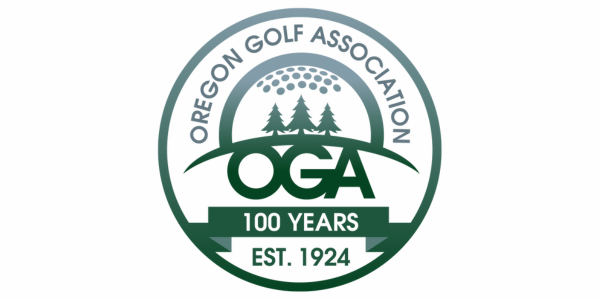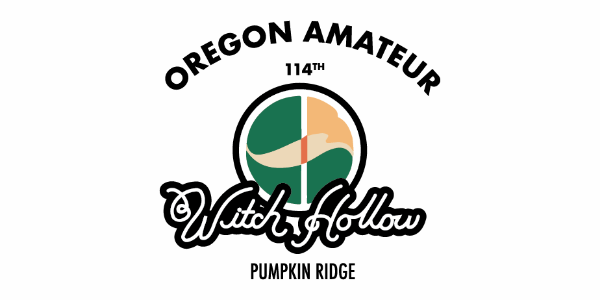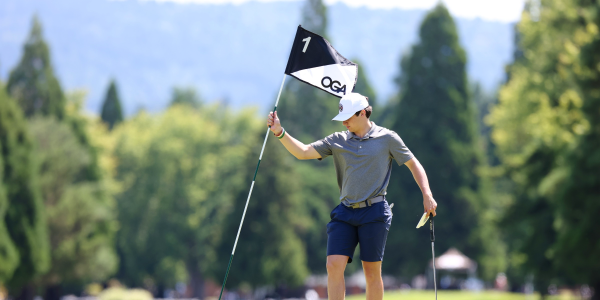Continued from January article: Oregon Golf Association Celebrates Centennial in 2024
 As the 1930s unfolded, more individuals stepped up to support and lead the Oregon Golf Association. Figures like Thomas Watts, A.J. Schmitz, C.E. Ingalls, and C.C. Wintermute took turns serving as president. Times were tough, and the expansion of OGA activities wasn't a top priority for Oregon's golfing community. Financial strains were evident, with dues set at $10 for 18-hole member clubs and $5 for nine-hole clubs in 1933. Concerns arose at the annual meeting about the ability of some clubs to afford these dues. Participating in the Oregon Amateur cost $3.50 and $1.00 for the Oregon Junior, with a gallery fee of $2.00 for the Amateur. The OGA treasury held just $559.01, a stark reminder of financial challenges.
As the 1930s unfolded, more individuals stepped up to support and lead the Oregon Golf Association. Figures like Thomas Watts, A.J. Schmitz, C.E. Ingalls, and C.C. Wintermute took turns serving as president. Times were tough, and the expansion of OGA activities wasn't a top priority for Oregon's golfing community. Financial strains were evident, with dues set at $10 for 18-hole member clubs and $5 for nine-hole clubs in 1933. Concerns arose at the annual meeting about the ability of some clubs to afford these dues. Participating in the Oregon Amateur cost $3.50 and $1.00 for the Oregon Junior, with a gallery fee of $2.00 for the Amateur. The OGA treasury held just $559.01, a stark reminder of financial challenges.
In the late 1930s, new leaders emerged in the OGA: Oscar Furuset and Dr. Millard Rosenblatt. They guided the organization through the late 1930s and into the 1940s, which included both the Great Depression and World War II. The focus remained largely on maintaining the status quo, although there were efforts to include more public course players in the Amateur tournaments, leading to growing fields. The Association adhered to USGA Rules and adopted the new 14-club rule tested in 1937. In the same year, the OGA recommended to the USGA to abandon the stymie rule, albeit with slow progress from the national body.
 While individuals like Neustadter, Tomlinson, and Furuset shaped the OGA, others excelled in its sponsored competitions, some achieving national and international recognition.
While individuals like Neustadter, Tomlinson, and Furuset shaped the OGA, others excelled in its sponsored competitions, some achieving national and international recognition.
Oregon saw its first notable homegrown player in Rudie Wilhelm of Portland Golf Club, who won the Oregon Amateur five times between 1915 and 1927. His rival, Dr. Oscar F. Willing, a dentist from Waverley, also claimed five Amateur titles. Frank Dolp and Don Moe emerged in the mid-1920s to challenge Wilhelm and Willing. Dolp won the Amateur five times from 1925 to 1932, while Moe claimed the crown in 1928 and 1937, representing the United States in Walker Cup play. John Robbins of Alderwood and Roy Wiggins of Oswego each won the Amateur twice before World War II.
 Notable mentions include Chandler Egan, who moved to Medford after winning the national Amateur twice; Russ Smith, a dominant player before Wilhelm's rise; and Lawson Little, hailed as the best amateur since Bobby Jones. Women's competition was also significant, with players like Mrs. Peter Kerr, Mrs. L.W. Palmer, Mrs. K.S. Reed, and Mrs. Rose Eva Montgomery making their mark.
Notable mentions include Chandler Egan, who moved to Medford after winning the national Amateur twice; Russ Smith, a dominant player before Wilhelm's rise; and Lawson Little, hailed as the best amateur since Bobby Jones. Women's competition was also significant, with players like Mrs. Peter Kerr, Mrs. L.W. Palmer, Mrs. K.S. Reed, and Mrs. Rose Eva Montgomery making their mark.
The Oregon Amateur bracket sheets also feature renowned golf professionals like Eddie Hogan, Howard Bonar, Roy Moe, and Bob Duden, alongside figures like Forrest Watson and Ercel Kay.
World War II halted OGA activities temporarily, but with its conclusion, a new era dawned, bringing fresh faces to the forefront.
Stay tuned for the next decade in our series… up next is 1944-1953 in March.


